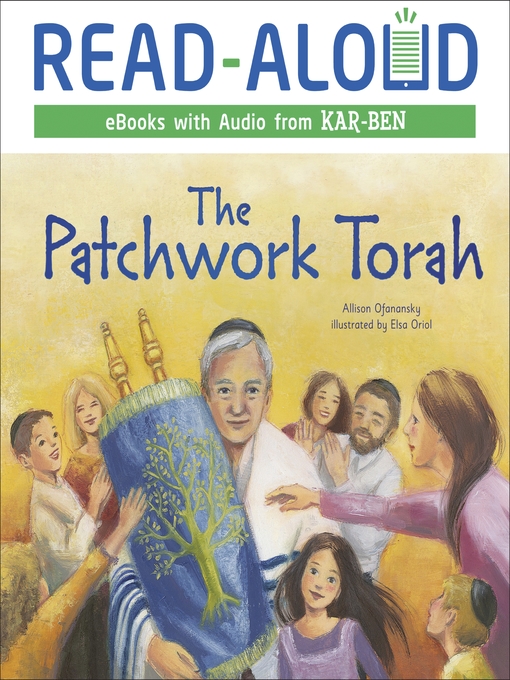-
Creators
-
Publisher
-
Release date
January 1, 2014 -
Formats
-
OverDrive Read
- ISBN: 9781512496024
-
PDF ebook
- ISBN: 9781512496024
- File size: 13246 KB
-
-
Languages
- English
-
Reviews
-
Publisher's Weekly
March 31, 2014
Inspired by tradition, deep faith, and an understanding that to "repair and reuse things" makes the world a better place, a sofer (the Hebrew word for a craftsman-scribe who transcribes sacred documents) takes pieces of four damaged Torah scrollsâravaged by old age, the Holocaust, fire, and Hurricane Katrinaâand creates a wonderful new Torah. Although Ofanansky's (Harvest of Light) prose and Oriol's acrylic and gouache vignettes strike a thoughtful, serious mood (as befits a story about an intensely spiritual labor of love), an unmistakable momentum and sense of suspense build as one by one the stories of the rescued Torahs are told, and the scrolls are put into a special cabinet for a yet-to-be-determined future. David, the hero, starts out as boy learning the art of the sofer from his grandfather during World War II, and ends as a grandfather himself in a joyous present-day Simchat Torah celebration, carrying his patchwork Torah as his young granddaughter "walked proudly alongside him." Surprisingly inventive and genuinely uplifting, this story beautifully and subtly ties together two key Jewish precepts: l'dor v'dor (generation to generation) and tikkum olam (repair the world). Ages 4-8. -
Kirkus
February 15, 2014
This book will be read more than once, and that seems only appropriate, as Jews are never finished reading the Torah. In a traditional synagogue, the congregation spends an entire year reading the Hebrew Bible out loud, immediately flipping back to the first chapter to start again. So it makes a sort of sense that David's family has spent many generations creating the same Torah scroll out of disparate parts. One part has been hidden during World War II and needs repair. Other sections of the parchment are damaged in a fire and in Hurricane Katrina. David's grandfather was a scribe--a sofer--and David learns from him, splicing pieces of the damaged scrolls together as an adult to make a new one. "This is a very unusual scroll," David tells the congregation. "I wrote part of it. Other sofers, in other places and at other times, wrote other parts." Even less-than-traditional Jews may be moved as the scroll is passed from one family member to another. David teaches his grandchildren to write Hebrew letters and reads the first lines of the scroll to his granddaughter: "In the beginning...." Even the most trivial sentences in the book start to seem oddly beautiful. A passage about scrap drives becomes profound: Nothing is ever lost or wasted; nothing--and no one--is ever unimportant. Readers may close the cover thinking that a picture book--like a Torah scroll--can be essential. (Picture book. 5-9)COPYRIGHT(2014) Kirkus Reviews, ALL RIGHTS RESERVED.
-
The Horn Book
July 1, 2014
David is a sofer, or Torah scribe. He has a collection of damaged Torahs, including ones rescued from the Holocaust and Hurricane Katrina. One day, his granddaughter inspires him to use those scrolls to create a "recycled Torah." Accompanied by dark acrylic and gouache illustrations, the story is ponderous but effectively conveys the importance of honoring tradition and history.(Copyright 2014 by The Horn Book, Incorporated, Boston. All rights reserved.)
-
Loading
Why is availability limited?
×Availability can change throughout the month based on the library's budget. You can still place a hold on the title, and your hold will be automatically filled as soon as the title is available again.
The Kindle Book format for this title is not supported on:
×Read-along ebook
×The OverDrive Read format of this ebook has professional narration that plays while you read in your browser. Learn more here.



